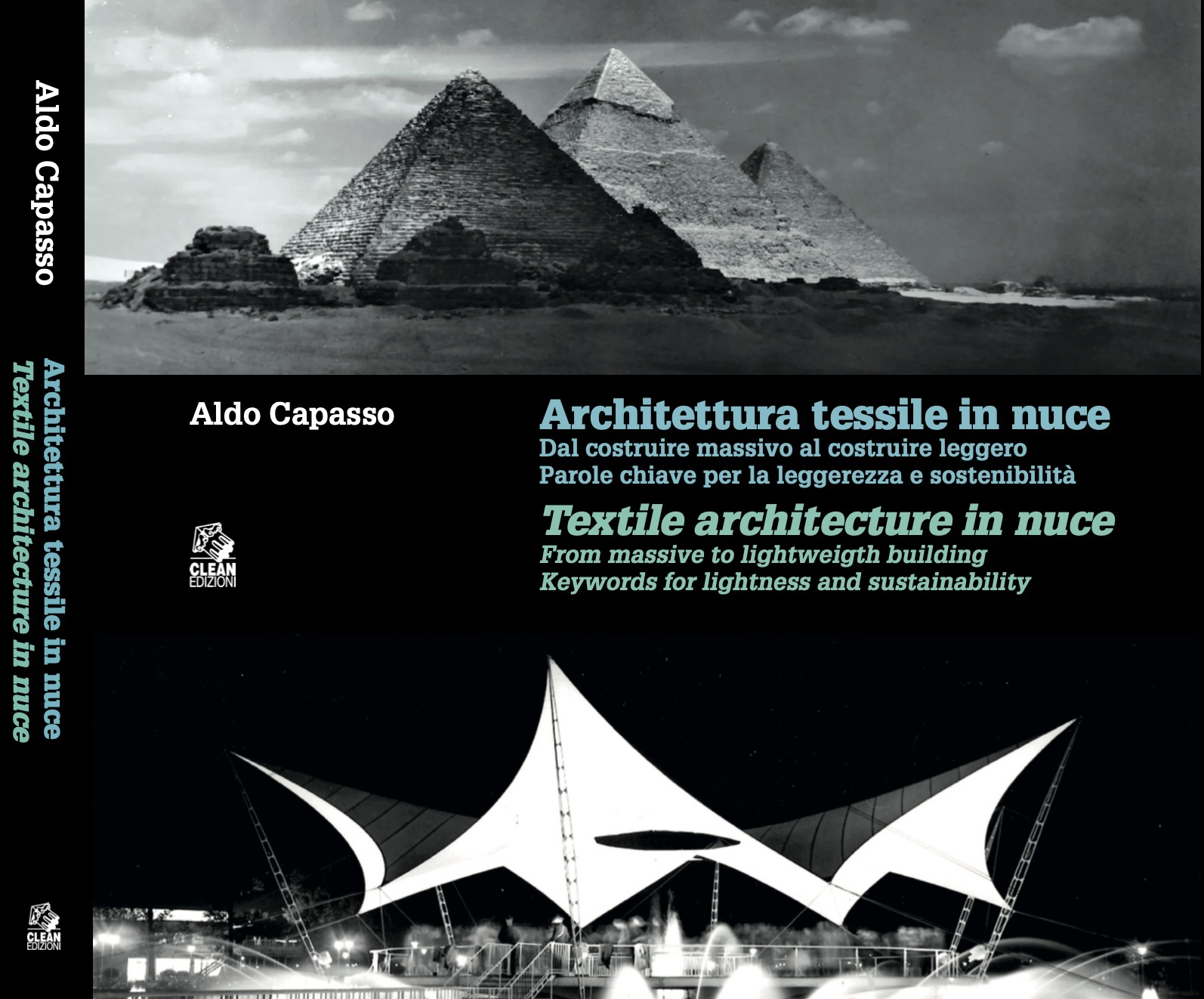(2023) Architettura tessile in nuce, Clean Edizioni
La scelta di aggiungere la locuzione latina in nuce nel titolo del saggio è tesa a chiarire che questo tipo di costruzione a membrana pretesa è nato da un archetipo strutturale del XX secolo, che poi ha dato vita a una proposta architettonica il cui paradigma è la leggerezza. Oggi, il concetto di leggerezza si sta sempre più affermando, peraltro, come un efficace contributo alla sostenibilità in molti settori della società. In effetti, il problema ecologico coinvolge anche l’architettura massiva e il concetto di etica ed estetica più in generale nel costruire. Tali riflessioni scaturiscono dalla valutazione dell’architettura tessile, anche in confronto con l’architettura massiva, partendo dai riferimenti letterari e strutturali, quali la Leggerezza di Italo Calvino, la locuzione costruttiva Less is more di Mies van der Rohe e le analogie strutturali con la biologia di Frei Otto. lI volume restituisce un lungo racconto che, a partire dalle opere di Frei Otto negli anni ’50 del secolo scorso, giunge ai giorni d’oggi. Un percorso in cui le molteplici immagini di opere e di prodotti industriali hanno sostituito molte strutture permanenti e irreversibili nei luoghi dell’abitare a favore della flessibilità e di innovate funzioni adattative. Nel contempo il testo sottolinea qualità e limiti delle tensostrutture a membrane in architettura.
Il testo nasce anche dalla volontà di ricordare i settanta anni trascorsi dalla presenza delle tensostrutture a membrana che hanno consentito la realizzazione dell’architettura tessile, trent’anni dopo la pubblicazione de Le tensostrutture a membrana per l’architettura, uno dei primi testi generali sull’architettura tessile, pubblicato in occasione del primo Convegno Internazionale “Architettura e leggerezza”, tenutosi a Napoli nel 1993.
LEGGI IL LIBRO
The choice to include the Latin locution in nuce in the title of the essay is aimed at clarifying that this type of pretensioned membrane construction originated from a structural archetype of the 20th century, which then gave rise to an architectural proposal whose paradigm is lightness. Today, the concept of lightness is increasingly gaining ground as an effective contribution to sustainability in many sectors of society. In fact, the ecological problem also involves massive architecture and the concept of ethics and aesthetics
in construction more broadly. These reflections arise from the evaluation of textile architecture, also in comparison with massive architecture, starting from literary and structural references, such as Italo Calvino’s concept of Lightness, the constructive phrase Less is more by Mies van der Rohe, and structural analogies with the biology of Frei Otto. The volume presents a lengthy narrative that, starting from the works of Frei Otto in the 1950s, reaches the present day. It’s a journey in which the many images of works and industrial products have replaced many permanent and irreversible structures in living spaces in favor of flexibility and innovative adaptive functions.
At the same time, the text highlights the qualities and limitations of membrane tensile structures in architecture. The text also stems from the desire to commemorate the seventy years since the presence of membrane tensile structures that enabled the realization of textile architecture, thirty years after the publication of Le tensostrutture a membrana per l’architettura, one of the first comprehensive texts on textile architecture, published on the occasion of the first International Conference “Architecture and Lightness”, held in Naples in 1993.


